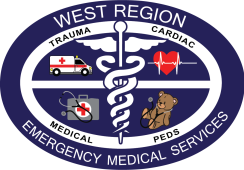Our Vision
We envision a tenable regional EMS and Trauma Care System with a plan that:
Keeps patient care and interests the number one priority
Recognizes the value of prevention and public education to decrease trauma/cardiac/stroke-related morbidity and mortality
Preserves local integrity and authority in coordination with inter/intra-regional agreements
Mission Statement
To assist and guide local EMS and trauma care providers in the coordination and improvement of emergency medical services and injury/illness prevention and public education in the West Region.
Through the Strategic Plan the West Region EMS and Trauma Care Council will work as a non-partisan facilitator, coordinator, and resource for regional EMS issues to achieve the Council mission.
Who We Are
West Thurston Fire Dept arriving on scene of an MVA
West Region EMS & Trauma Care Council, Inc. is a non-profit 501(c)(3) corporation.
The Council is empowered by legislative authority (RCW 70.168.010-70.168.900) and WA State Dept of Health (DOH) Administrative Code (WAC 246.976) to plan, develop, and administer the EMS and trauma care system in the 4.5 counties that make up the Region: Grays Harbor, Lewis, N. Pacific, Pierce and Thurston.
It is one of eight regional councils statewide and funded primarily through a contract with the Office of Emergency Medical and Trauma Prevention DOH.
Link to list of EMS Agencies in the West Region
Link to Trauma Facilities in WA State
The Council assists DOH in addressing four fundamental questions:
What are the causes of trauma identified by communities within the West Region?
Is trauma care readily available in the region?
Is the system efficient and effective?
What is needed to implement and/or improve the system?
The West Region EMS Strategic Plan details the Council's answers and recommendations. The plan seeks to continuously improve a model system that effectively treats and rehabilitates trauma victims. Preventing injury or reducing injury severity plays an important part. A fully functional trauma system addresses education, prevention, rapid communications, prehospital care, in-patient trauma care, rehabilitation, a trauma data registry and a quality improvement program. Our work is guided by the Council's Bylaws
WEST REGION QUALITY IMPROVEMENT LESSONS LEARNED
QI Lessons learned from case reviews may be found on the QIF page of our website."


